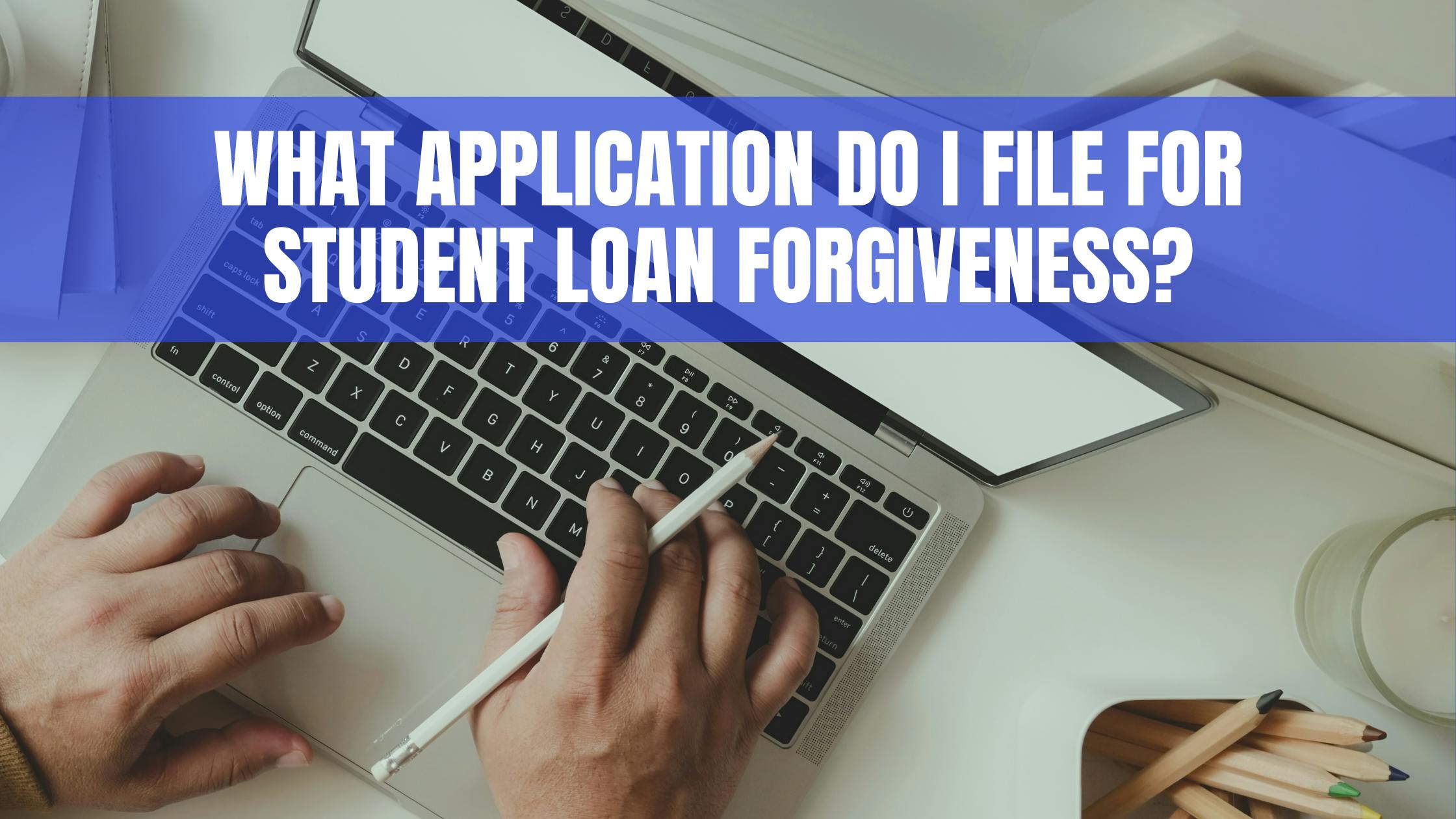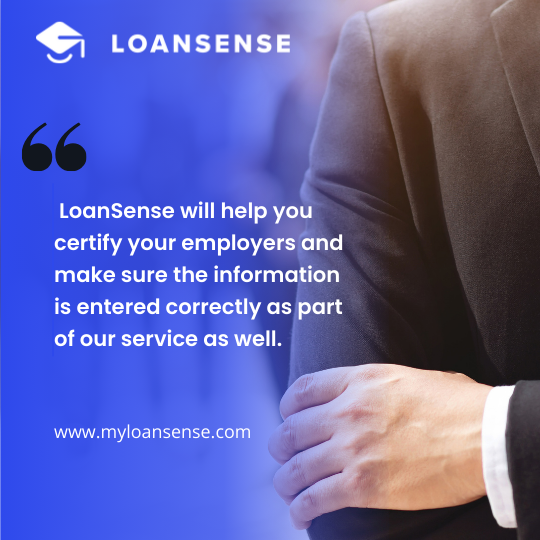What application do I file for student loan forgiveness?

Are you burdened by the weight of student loans, wondering if there's a way to find relief? Student loan forgiveness might be the answer you've been searching for. In this guide, we'll walk you through the process step by step, starting with the crucial question: "What application do I file for student loan forgiveness?" Whether you're a recent graduate or have been carrying student loan debt for years, understanding the application process is the first step toward potentially lightening your financial load.
What is Loan Forgiveness?
First, let's start with what is loan forgiveness. Loan forgiveness is when an individual with student loan debt makes a certain number of payments. If you have a non-profit, or government employer, it's 120 payments. If you're a private sector employee, it's for 20 to 25 years, which is 240 to 300 payments. After you make those set amounts of payments, whatever you do not pay at the end of the required number of payments, gets forgiven.
Now, let’s discuss who needs to apply for loan forgiveness versus who does not need to apply because it is different. So first and foremost, we hear a lot in the news about public service loan forgiveness. Public service loan forgiveness allows those who are employed by a hospital, non-profit system, non-profit organizations, government, essentially 501c3 in government, as well as even private sector contractors who work in healthcare systems, including those private sector employees, though not directly employed by non-profit hospital systems, also qualify for what is called public service loan forgiveness.
To qualify for loan forgiveness, you must have made 120 payments while working for a PSLF-qualified employer. If there's any remaining balance after these 120 payments, it will be forgiven. That means any remaining balance after you have made 120 qualified payments will go away, erased, and forgiven.
Employer Certification Process
To pursue student loan forgiveness, you need the Employer Certification form. This specific application is designed to certify your employment with a particular employer, and it's essential for the loan forgiveness process. It's important to note that you don't just file one application that absolves you of all your repayment obligations. Rather, you must submit this application form for each employer you've worked with. It's a detailed process where you verify your tenure with each employer, indicating your employment start and end dates.
Let's say you work for one employer for four years, which counts for forty-eight payments. You certify those forty-eight payments at that employer by submitting an Employer Certification Form. You go to another employer, where let's say, you worked for another three years. So you would certify another thirty-six payments at that employer and submit another Employer Certification Form. There's an application for every employer to prove that they are an entity that qualifies for public service loan forgiveness.
Counting payments towards Public Service Loan Forgiveness does not have to be consecutive, let's say for two years, you go work as a private sector employee that does not get you qualified for public service loan forgiveness. However, before that employment, you’ve worked with a non-profit agency. And after you worked for, let’s say, 1 year in the private sector, you’ve decided to go back and work for a government organization.
Certifying the time in school if you work full time for a non-profit or government agency
Another thing is you can certify the time when you're actually not in school. So there are some people who go back to get their Master's Degree and they're working full time for a non-profit organization but they're in school at the same time and so they have in-school status. While you are in this status you will be placed in deferment and hence will not be required to make student loan payments until 6 months after you graduate. However, even when you are working and making payments at the same time that you are in school, those payments are not going to count.
You can ask your servicer to be taken out of in-school status to get that time counted and it's especially beneficial if you work for a non-profit full-time basically because you want to count all payments made towards loan forgiveness. Full time is 30 hours. That's a caveat.
What if I don’t work for a non-profit organization?
What if you don't work for a nonprofit or government organization? Do you still qualify for loan forgiveness? Well, you can potentially qualify for loan forgiveness. The first factor to consider for you to get loan forgiveness is to get into an Income-Driven Repayment Plan. These plans are based on your income and will help reduce your payment relative to the plan the government first puts you on.
Compared to working at a non-profit agency or a government organization which will qualify you for a Public Service Loan Forgiveness after 10 years, working for private sector organizations would have your loan forgiven after 20 or 25 years depending on the type of loan that you have - would it be graduate or undergraduate loans.
After you make 240 or 300 payments towards your student loans, whatever is not paid off based on your income is then forgiven. There is no specific application for this loan forgiveness. You just have to hold your servicer accountable for counting each and every payment that you have made including these three years of forbearance.
The Pandemic Pause and the IDR Waiver Program
Okay, so let’s talk about the over 3 years of no required payments. The COVID-19 pandemic brought about an unprecedented global crisis, and in the context of student loans and forgiveness, it had significant implications. During the pandemic, there was a temporary suspension of federal student loan payments and interest accrual in the United States. This pause was designed to provide financial relief to borrowers facing economic hardship due to the pandemic. During this period, no interest accrued on federal student loans, and borrowers were not required to make payments.
Aside from the positive impact of having no payments towards your student loans, you can get these three years of forbearance counted plus up to another three years of prior nonconsecutive forbearance. This means if there were times that you have been in forbearance, doesn’t matter if it was non-consecutive, you can get up to three years counted under Biden's what's called IDR Waiver Program.
You don't need to understand what it all means, you just need to know that by enrolling in an Income-driven plan, the program will allow up to three additional years to count towards loan forgiveness.
This means that 3 years of counted payments plus 3 and a half years of forbearance due to the pandemic pause will total 6 and a half years of payments that would count towards loan forgiveness as long as you are in the correct plan.
So whether you are working for a non-profit organization or you are in the private sector, those 6 and a half years would definitely lead you nearer to loan forgiveness. A lot of people who would qualify for that six and a half years that are counting towards a twenty-year plan so actually they’d only have to pay for thirteen and a half years is a pretty good gig even if you don't work for a nonprofit or government entity.
Again there's no specific application for this, you just have to hold your servicer accountable to counting your payments. LoanSense will submit a payment count letter to your servicer to have them update you on what number of payments have you made thus far. It is really important to count every payment made towards your loans because no one is going to track that as closely as you will. If it were up to the servicers, they would have you pay forever because that's how they get paid - they get paid when you continue to pay.
Keep track of your payments.
It is important that you know you have x amount of payments counted and you should put it in the calendar of when your last payment should be so that you very much know when to hold your servicer accountable for forgiving the remainder after you hit that required payment.
Filing jointly versus filing separately for married couples
If you're married you should consider filing your income taxes separately so your spouse's income doesn't count towards your student loan payment because if you file jointly the government will consider your spouse's earnings as available funds to pay your student loans. We do not want that.
We can also help you understand and track how many more payments and how to best manage your student loans with the ultimate goal of reducing how much you give to the Department of Education and optimizing and increasing how much you save for your future financial goals.
We can't wait to be your friendly advisor and help you along this pathway in this journey. Visit our website at myloansense.com, to get a free no-obligation plan, and we are on standby to help you achieve your student loan success.
Need help with student loans? Get in touch with us. To connect with a loan advisor and schedule a consultation, please click here. You may also use our read more information about the SAVE program and other available resources about student loans by visiting the help section of our website at https://resources.myloansense.com
Knowing when to file and when not to file for Loan Forgiveness is a very rewarding feat. We invite you to dig deeper into this topic to gain a better understanding of how it can benefit you. To help you on this journey towards financial empowerment, we encourage you to connect with our knowledgeable loan advisors.
By scheduling a consultation, you'll unlock valuable insights that can help you make informed decisions about your student loans —Schedule Your Consultation today, and empower yourself with the knowledge needed to take control of your financial future! Your financial well-being starts with informed decisions.
Need help with what options are best for you? Get in touch with us.
Get some pro tips by signing up to our Newsletter

